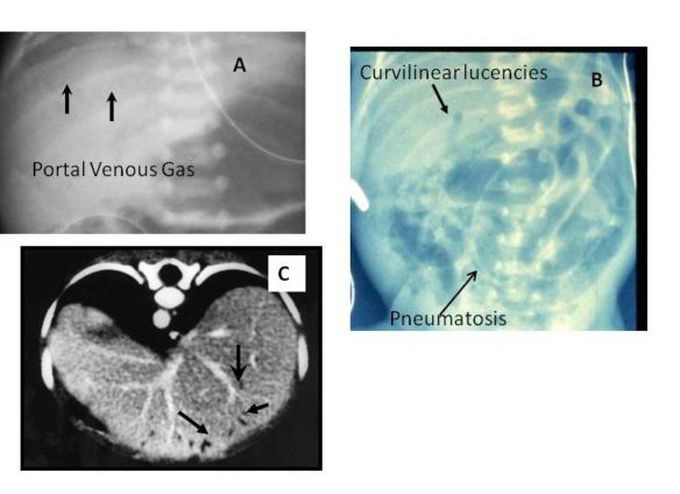


Radiolucencies indicating portal venous gas
Pneumatosis is found at least transiently in 70-80% of infants with NEC but may not ever be detected, especially in infants who have received no or minimal enteral feedings or in infants who are very premature (less than 26 weeks postmenstrual age). Portal venous gas was once thought to be an especially ominous finding but more recent studies have debunked this teaching. Pneumoperitoneum (free air in the abdomen) indicates full thickness intestinal necrosis at one or more locations with escape of intestinal gas into the peritoneal cavity (See Figure 5). A large quantity of free air may be immediately visualized on the KUB. Findings may include marked hepatic hypodensity and perhaps a classic “football sign” caused by an air outline of the falciform ligament. Smaller volumes of free air may be diagnosed on decubitus or cross-table lateral films. A thin air shadow over the liver on a left lateral decubitus may be the only finding to diagnose a pneumoperitoneum (see a large accumulation in

